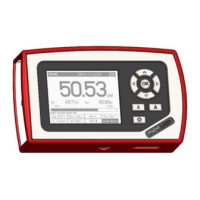5.10 Energy Measurement with Pyroelectric Sensors
cover most of the sensor area, but it has to be considered the maximum
allowed energy density.
- Repetition Rate
The maximum pulse repetition rate depends on the combination of the internal
capacitance of the detector and the load resistor. The display unit has an input
resistor of 1MΩ (like the typical input resistor of an Oscilloscope).
- Pulse Length
Thorlabs energy sensors detect and measure pulses from sub nano-seconds
up to approximately 2 ms.
The pyroelectric effect allows generally just the measurement of a temperature
change given by radiation pulses or modulated radiation. In regards to shorter
impulses there are no restrictions, as the energy of the shortest impulse is
converted into heat flow in the absorption layer. The maximum impulse dura-
tion possible is influenced from the size of the R-C constant, given by the
detector capacity and the load resistance, as well as the precondition that the
thermal time constant of the detector must have no influence up to the point of
the measurement evaluation.
- Wavelength
The sensors are typically calibrated at one wavelength, for other wavelengths
a sensor specific correction curve is stored in the memory in the sensor con-
nector. The black coating is nearly linear flat over a wavelength range from
185nm to > 25µm; the ceramic coating is also suitable for this wavelength
range, but is not spectrally linear.
36

